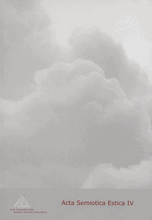“Piiririigi” ruumiline aeg
The spatial time in Emil Tode’s “Border State”
Author(s): Maris SaarSubject(s): Semiotics / Semiology
Published by: Eesti Semiootika Selts
Keywords: narrative analysis; postmodern time; spatial organisation of narrative; retrospective first-person narrative; poetics of space; postmodernistlik aeg; retrospektiivne minajutustus; ruum narratiivis; ruumipoeetika
Summary/Abstract: When Emil Tode’s novel “Border State” was published in 1993, it immediately received extensive attention from the critics. Positive and negative reviews, short and in-depth research have been written. This article seeks to analyse a dimension in the novel’s composition that has largely been overlooked – the chronological organisation of the text and its relations to the spatial structure of the narrated world, deriving specifically from retrospective first-person narrative. The narration in the “Border State” forms from the letters that the narrator writes, thus the text consists of isolated memories. The chronological and causal order of the events is not explicit, as the memory-time does not follow the rules of “real” time. The transfer from one scene to another is triggered by spatial elements rather than causality. This diffusiveness allows the time of the novel to be viewed as postmodern or mythical – both these characteristics reveal the time as giving preference to other dimensions of the text in organising the structure of it. Gaston Bachelard’s view of the personal space in “The Poetics of Space” corresponds to the poetics of the “Border State” in many ways. The space – rooms, houses, windows, cities, streets, landscapes – has a distinctive role in the narration. The ways of being, musing and dreaming created by the rooms the protagonist inhabits are all distinct in their influence to the character. The sense of centrality, if found, evokes a feeling of safety and isolation from the world. Thus the textual universe of the “Border State” is created through a projection of individual perception from the spatial organisation rather than the chronological.
Journal: Acta Semiotica Estica
- Issue Year: 2007
- Issue No: 4
- Page Range: 146-159
- Page Count: 14
- Language: Estonian

